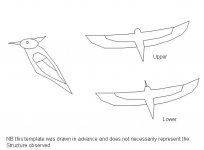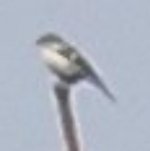Jane Turner
Well-known member
MMinNY said:While you may not know whether the IBWO exists or not (I don't know either), you seem to believe (very strongly) that it does not, and that belief appears to be the foundation from which you proceed to other beliefs, which are based not on the record but on speculation.
Would you be trying to tell me now what I believe?
I have entirely open mind about the possibility of IBWO still existing. There are however known records of leucistic PIWO, including one that was temporarily mistaken for IBWO by a very experienced birder. Partial leucism is not that rare in birds, especially not black and white birds it seems (presumed to be less of a survival/reproductive handicap.)
This is not like an ID question on BF were as a bunch of well meaning amateurs, we all have a best guess at what the ID is from a partial description or a fuzzy photo. I DO believe that it a critically important record where the ID needs to be proven. PIWO and who knows PIWOxIBWO need to be categorically eliminated as possibilities. They are not. TRE knows what to look for now. Let's hope he sees his bird(s) again and can describe the dorsal stripe, the bill and where the white is precisely in the wing.





